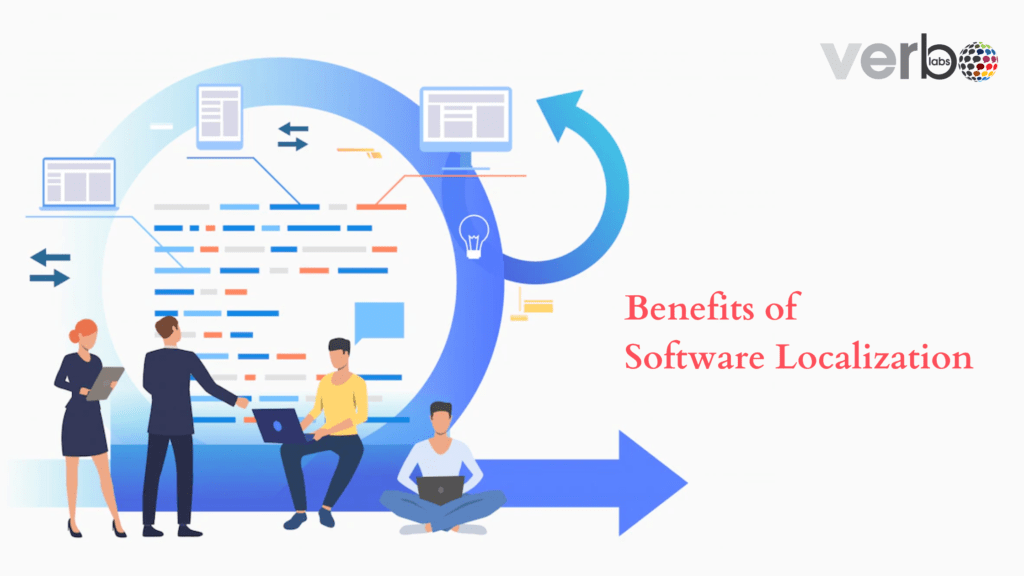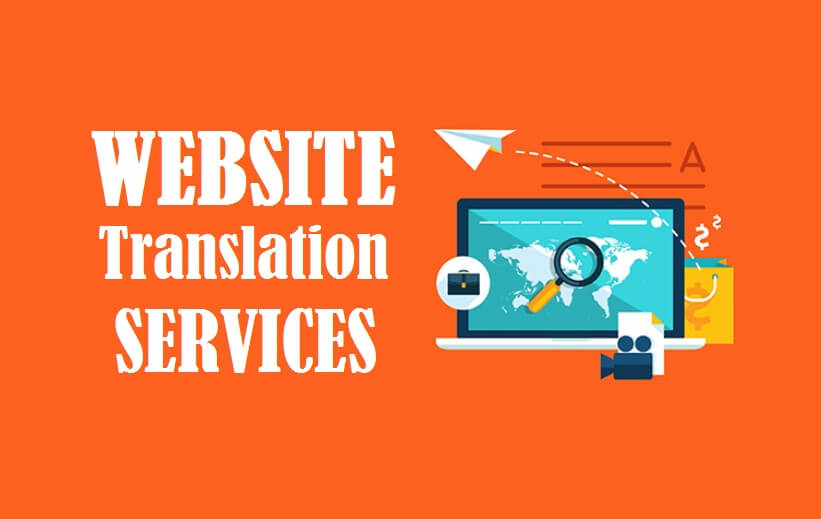During these advanced time periods, most businessmen want to grow globally for their own extreme benefit. But, do they know the exact way to do so? If there’s any possibility that your software may be helpful to people in various parts of the world, then it’s worth it for you to consider translating your software. Of course, you have to do so thoroughly with smart software localization service providers such as VerboLabs. Smoothly translating your content into several languages won’t inevitably pave the way for you to split into global markets. Start by expanding a smart strategy and purchasing the right technology to stiffen your localization complex. With all of your questions answered, you’ll be well on your way to leveraging the advantages of the software translation. This won’t be easy, but if you know how to do it right from the start, you’re already way ahead in the competitive market.
In this article, we will learn about the 5 benefits of software localization services to your business.
- Consider the profits of software localization
- Advantages of a competitive market
- Broader reach around the world
- Higher user engagement
- Global reputation and presence
1. Consider the profits of software localization
Translating your product or service opens up a completely new world of opportunities. This is why it tends to be a substantial investment. When you slow down to look nearly at the possible benefits, you will find a compelling rationale for engaging in this aggregate and worthwhile path.
2. Advantages of a competitive market
With a skillfully localized product/service, your competitive advantage is apparent. Now, more constantly than ever—and tomorrow even more than today—the software market is becoming aggressive and vast. It is one thing to distinguish yourself in your conventional territory, but the market has its limits. Choosing to split into as-of-yet unusual markets is a challenging undertaking, but the rewards will not let you down. When you can devote yourself to a sharp and sustained localization strategy, you bear a real chance of distinguishing yourself in international markets by increasing your ROI exponentially. The fact is that many might be from the competition already out there, or they’re on their way. With as fast as the aspects of software localization move in the industry might be behind the curve before you’ve even accomplished it.
3. Broader reach around the world
There might be a broad audience who will never even try your software because it isn’t attainable in their market or in their native language; they’ll never have the opportunity to find out, no matter how much they like it and require it. You may assume that you won’t find out about high-volume use in specific locales, but unless you indeed excavated into the data to establish where markets are worthy, you won’t know. Correct localization or translation isn’t just about transforming the words from one language to another; it’s about understanding how the local market would best interact with the product or service. They’re examining availability, reviews, and quality of support, the vocational look of the product or service, and the marketing. Thus, there’s a much greater load on today’s outcome and growth teams—and the translation teams too. In addition, there’s way more at stake because the usage of software now, comparable to any time in individual history, is enormously higher per capita. The way to meet the immense changes of tomorrow’s software users is through good localization. It’s the best option for affordability, cost-effectiveness, and high-quality scalability.
4. Higher user engagement
The genuine localization doesn’t just remove the obstacles to access; it also allows consumers to understand and truly feel the benefit of the service. In another way, they’ll forsake it and look for another vehicle that does the job. An extensive software localization approach involves globalism to ensure optimal functioning, thorough market research, and content modification that allows local consumers to understand and benefit from your service. Your entire translation team—that includes developers and reviewers and the C-suite—needs to be devoted to consistency, the integrity of the brand, and premium quality content.
The ideal audience experience means that they are engaged with your software and that they want to keep using and recommending it. And the more you get to find out about your markets, you can build an even deeper brand relationship. You can go beyond localization alone and introduce smart ways of communication, so those local users feel your devotion to them—to connecting with their interests and purchasing their needs from you. Software localization is a way better thing that can glorify your whole business in the global market.
5. Global reputation and presence
When you can attain global status, you’ll have achieved a critical business milestone. You may not have a strong kick in many of your global markets yet, but even just having software that’s available in multilingual format is quite impressive to those who are judging the importance of software localization. The more accessible your product or service is, the more audience you will gain and the more you will be seen as a company worth listening to.
How to access translation or localization benefit?
These advantages all depend on software localization or translation being done properly. Just as you want to reap the rewards, you also want to avoid the aftereffects of missteps. As we’ve created, actual software translation is no minor enterprise. To utilize the benefits, you’re going to have to get serious about localizing your software. The above listed are the software localization best practices that are available at VerboLabs.
Be ready to make a commitment to consistency in software localization. You should do your research thoroughly to emphasise your markets due to the fact that, once you start down a language track, you need to stick with it. For example, if you make your software available in Spain, then every user in the audience is going to assume localised updates for the new version you release. It should be remembered that it’s not just about ensuring users in the first place; it’s about keeping them informed and smart about how you proceed with localization in every market that you want. Are you going to localize the software and then stop short of translating your marketing of digital content or your support? You may be able to get your place in certain markets if you’re smart and intentional about it, but you wouldn’t want to undermine your chances for success if the potential is immense. One should have a solid strategy, planning, and localization ecosystem in place. There are so many advantages to software localization, but you may never reach the desired level of success if you don’t have a strong and sustainable system in place. You can connect with the expert in software localization at VerboLabs, who will provide every great opportunity ahead of you as you’re ready to go international. But the next step you take is vital to whether you’ll rectify the hurdles and, eventually, reach an audience in your target markets.
Concluding to the above words
Software localization involves reorganising different elements of the software, including the language, user experience or user interface, formatting standards for marketing, and graphic elements. These modifications are made to assure that localized software is better suited to its targeted users. Localization should be done on all software structures, including your website or your online platform. Organisations realise how important it is to translate the software of the business to broaden its market, boost its services and products, and grow it!



